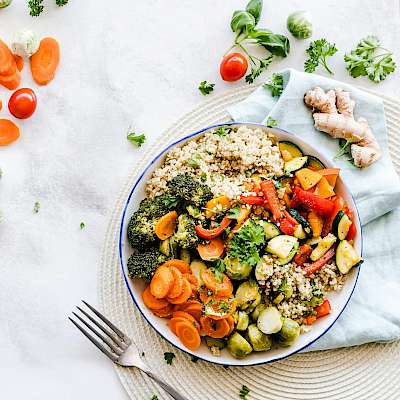|
Key Headlines on meat |
- The majority of people (61%) are willing to eat less meat.
- Nearly a quarter of people say they are eating less meat now than in 2020.
- There has been a 45% increase in the number of people who eat meat only one or two days a week.
- Cost and health are the top reasons for reducing meat consumption, followed by impact on the climate and animal welfare.
- Supermarket actions, including offering more meat free ready meals and lunch to go options and more support to put together easy low meat meals, are among the top strategies that help people eat less meat.
|
People are willing to consider eating less meat |
A clear majority of people in the UK (61%) say they are willing to eat less meat. Over two thirds of younger people (aged 18 - 34) are open to reducing meat consumption.
|
Men are less willing to consider eating less meat than women |
Men are less willing to consider reducing the amount of meat they eat than women.
|
People are eating less meat than they were a year ago |
Nearly a quarter of people are eating less meat than they were a year ago. There was a 14% increase in the amount of people who reported eating less meat than in 2020.
|
People are eating meat less regularly |
The march to a more flexitarian approach is a growing trend. 16% of people say they eat meat only one or two days a week, a significant increase of 45% since our 2020 survey.
The data shows a general shift towards eating meat between 1 and 4 times a week. There was an 11.5% drop in those who eat meat five or six days a week from 2020 (26% in 2020 down to 23% in 2022).
|
Cost and health are the biggest drivers of eating less meat |
Saving money was the biggest driver for reducing meat consumption (22%) closely followed by health (20%). Health was the leading reason in 2020, when we last surveyed the population in the backdrop of COVID-19 pandemic. The impact of meat production on animal welfare (14%) and climate change (14%) are also key reasons for eating less meat.
|
People need help across the board to eat less meat |
More support and better food options are needed to help people eat less meat, both when cooking food at home, buying pre-prepared foods or eating with family and friends. Supermarkets have a key role to play in making this happen.
1 in 4 said that having more low or no meat options available in ‘ready meals’ and food products’ would help them to reduce their meat consumption. 1 in 5 said that ‘more low or no meat’ lunch to go options would be helpful.
Over a third (35%) of those surveyed said that they wanted more knowledge on how to plan and cook meals with less meat to help them reduce their meat consumption.
|
Key Headlines on sandwiches |
- 94% of people eat sandwiches for lunch
- 64% of people buy lunch to go at least once a week.
- Nearly half of people eat vegetarian or vegan sandwiches
- Price is the biggest priority for people when choosing to buy sandwiches.
- Over a third of people want sandwiches to be healthy
|
Frequency of eating sandwiches for lunch |
|
What types of sandwiches people eat |
|
Where sandwiches are bought (High Street retailers/supermarkets |
|
Frequency of buying lunch to go |
|
Factors influencing buying lunch to go |
Eating Better polled 2311 individuals across the UK’s general population over the weekend of 11th/12th June 2022. Click here for the results from the Savanta survey.
